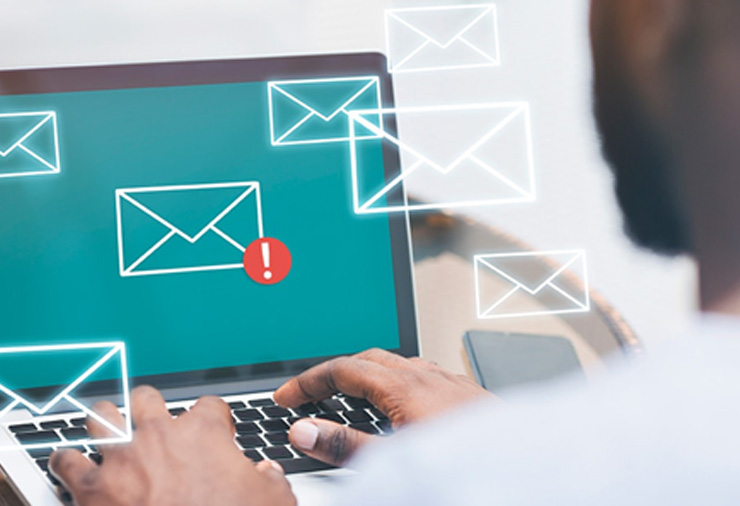Is “Inbox Zero”—the clean slate with every email handled—an impossibility at your workdesk? Whether you work in the office or remotely, archiving, keeping tabs, delegating, and crafting the right responses to every important email you receive is probably becoming another job in itself.
There is an epidemic of email overload, and virtual work has led to serious stress for many professionals. According to a 2021 Superhuman survey, email fatigue is the leading cause of distraction at work and a major cause of rising dissatisfaction with remote work. It’s such a pain point that 22% of remote workers want to leave their current job because of the volume of email they receive.
While your flood of email can’t be stopped, here are some efficient ways to handle overload so that you can minimize interruptions, decrease mistakes, and gain back more of your time for productive pursuits:

Email Strategy #1: Set clear expectations for email use with your team
Harvard Business Report reveals that 57% of employees report not being given clear direction, and 69% of managers are uncomfortable communicating with employees. Set communication guidelines with your team, accounting for the following points:
• When email is the appropriate communication platform and when it is not
• When direct messaging, phone, or in-person discussions should be used
• When a “reply all” is necessary and when it is not
• Which team members certain types of requests and communications can be delegated to, as needed
• The importance of being concise and getting to the point immediately
Email Strategy #2: Answer emails at designated times
Set up 3-4 blocks of 15-30 minutes per day, depending on your email volume, to respond to emails, so that you can maintain your workflow at all other times. Communicate this to your team so that no one expects immediate responses, and provide an alternate channel for urgent messages such as direct messaging.
Email Strategy #3: Turn off email notifications
With your time block system in place, you won’t have a need to receive distracting notifications. Notifications can be stress-inducing and overwhelming themselves.
Email Strategy #4: Delete, do, delegate, or defer
Go through your inbox during the designated time slots and organize emails in folders by using the 4 Ds model. You’ll notice an immediate feeling of relief when you see how many emails can be deleted, delegated, and deferred. This habit will enable you to take timely action on the emails that matter most, and still effectively handle other communications as your priorities require. You may want to add a fifth option—a “waiting” folder for action-pending emails that require others to respond before you can do anything.
Email Strategy #5: Create subfolders, if necessary
If step 4 still leaves you with too many emails in the “do” category, create subfolders and group together important emails and email chains according to key topics. This archiving method will make it much easier to find what you need when you do have time to respond. Outlook and other email applications can automate this step once you set up rules to categorize or filter emails into subfolders and prioritize based on the sender.
Email Strategy #6: Add follow-up reminders to your calendar
For messages that require a follow-up action that you have designated to defer, put a reminder on your calendar including the folder location and date when a follow-up is required.
Email Strategy #7: Unsubscribe from unwanted email
Do you receive industry newsletters and marketing communications in your work email? Remove yourself from these lists by using the unsubscribe button. For those communications you still want to receive, change your email to a non-work address that you can review by choice during your personal time. Mark all unwanted communications as “spam”, so that you won’t continue to receive more of the same from these sources.
“Inbox Zero” may be an unrealistic pipe dream, but with these strategies, you should be able to conquer your inbox without feeling overloaded. Let us know how these tips are working for you!

